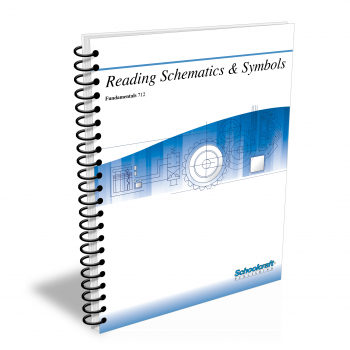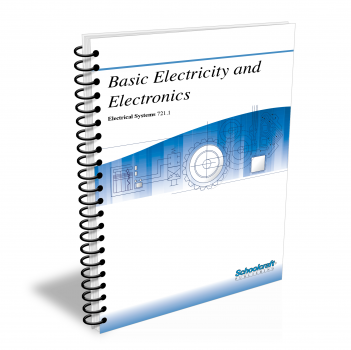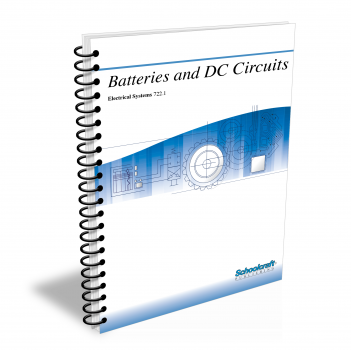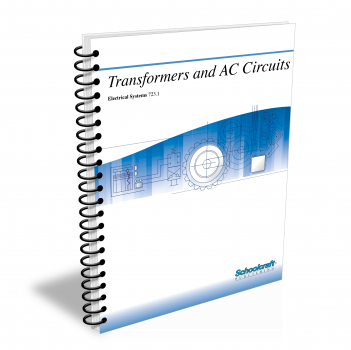DC Equipment and Controls
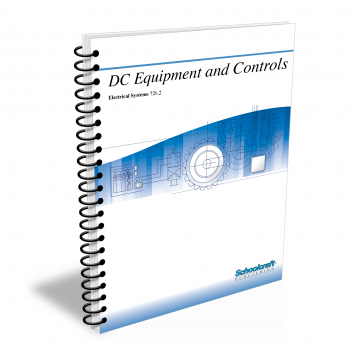
Course Number: 726.2
The DC Equipment and Controls textbook covers DC power applications in industry, types of DC generators, operating characteristics of DC motors, DC armature principles, and armature maintenance and repair. Includes types of DC relays, DC controllers, over speed and overload protection, drum and reversing controllers, dynamic braking, DC power supplies, diodes, semiconductors, SCR principles, and DC maintenance practices.
Does your curriculum require additional topics not included in this textbook? Build a customized version of the DC Equipment and Controls textbook below.
This textbook has been recently updated
to include topics lists, objectives, & key terms for every chapter.
Recommended Contact Hours – 15
Preview a Chapter
Available Supporting Material
- Table of Contents
- Exam Copies
- Suggested Titles
Table of Contents
Chapter 1: DC Power in Industry
Topics: DC generators and motors; Rectifiers; SCR speed control; Storage batteries; Electroplating; Electrolytic refining; Arc welding
Learning Objectives:
- List the advantages of dc over ac.
- List the brush problems caused by eddy currents.
- Name three types of batteries commonly used in the plant.
- Explain how the electroplating process works.
- Explain the difference between straight polarity and reversed polarity in arc welding.
Chapter 2: DC Electromagnets
Topics: Magnetic forces and fields; Magnetic shielding; Solenoids; Residual magnetism; Relays; Polarized relays; Protecting relay contacts
Learning Objectives:
- State the definition of residual magnetism.
- Explain the effects of distance on magnetic field strength.
- Discuss the characteristics and uses of solenoids.
- Discuss the characteristics of relays.
Chapter 3: DC Generators
Topics: Parts and action of DC generators; Armature reaction; Commutation; Interpoles; Types of generators; Losses; Parallel operation
Learning Objectives:
- Explain the function of each of the main parts of the dc generator.
- Explain how to increase the number of pulses during each rotation of an armature.
- Demonstrate how to combine the shunt field and series field to produce a compound generator.
- State the reasons why electrical losses, magnetic losses, and mechanical losses occur in the dc generator.
Chapter 4: DC Motors
Topics: CEMF; Armature reaction; Self-induction and commutation; Interpoles; Torque; Speed regulation; Shunt, series, and compound motors
Learning Objectives:
- Explain what happens during self-induction and commutation.
- Define CEMF.
- State the difference between speed regulation and speed control.
- Name the kinds of dc motors.
- Explain the different operating characteristics of series, shunt, and compound motors.
Chapter 5: DC Armatures
Topics: Windings; Armature, copper, eddy-current, and hysteresis loss; Commutation; Armature maintenance
Learning Objectives:
- Name the basic parts of an armature assembly.
- Describe the main differences between a lap winding and a wave winding.
- List the characteristics of a single-reentrant simplex-lap winding.
- State the definition of copper loss, eddy-current loss, and hysteresis loss.
- Demonstrate how to perform preventive maintenance on an armature.
Chapter 6: DC Relays
Topics: Operating characteristics; Shunt, series, lockout, and inductive time-delay relays; Magnetic blowout coils; Dynamic braking
Learning Objectives:
- Name three factors that determine the performance and reliability of a relay.
- Name the six types of commonly used relays.
- Explain the operation of each type of relay.
- Explain dynamic braking.
- Describe how a disc brake is attached to a motor.
Chapter 7: DC Controllers
Topics: Classification; Factors affecting motor speed; Protection; Temperature compensation; Manual starters; Overload reset; Magnetic and drum controllers
Learning Objectives:
- List the kinds of functions performed by motor-control devices.
- Name the types of motor controllers and discuss their operating characteristics.
- Explain how each of the three kinds of thermal overload relays works.
- Name the kinds of resets for overload relays.
Chapter 8: DC Power Supplies
Topics: Electron emission; Electron tubes; Vacuum-tube diode and rectifier; Mercury-vapor diodes; Semiconductors; Checking diodes; Identifying replacement semiconductors
Learning Objectives:
- Discuss the operating principles of vacuum tubes and rectifiers
- Name the four types of filters commonly used in rectifier circuits.
- Identify a mercury-vapor diode.
- List common causes of semiconductor failure.
- State the criteria for selecting replacement semiconductors.
Chapter 9: Silicon Controlled Rectifiers
Topics: Principles of SCRs; Pulse timing in DC circuits; Trigger pulses; SCR motor control; AC and DC applications; AC-DC conversion
Learning Objectives:
- State the definition of a silicon controlled rectifier.
- Explain how an SCR works.
- Explain how to increase the effective current and the power delivered to a motor by an SCR motor control.
- List four dc applications of SCRs.
- List four ac applications of SCRs.
Chapter 10: Maintenance of DC Equipment
Topics: Inspection; Replacing field coils; DC motor controllers; Relay contacts; Commutation; Brush selection and care; Maintaining relays and armatures
Learning Objectives:
- Explain how to test field coils to determine the condition of the insulation.
- List the signs of a short-circuited field coil in a machine.
- Explain how to replace a field coil in a machine.
- Discuss how to maintain relay control.
- Name the criteria for satisfactory commutation.
Request Exam Copies
Exam Copies
Ready to see a copy of our textbooks? After selecting which textbooks you’d like to review for your course, you can submit your request by either logging in or creating an account so we know where to ship your exam copies. A representative from Schoolcraft will contact you to confirm and finish processing your request.
Exam copies are always free and yours to keep.
Selected Exam Copies
none selected
* Maximum of five copies can be ordered
